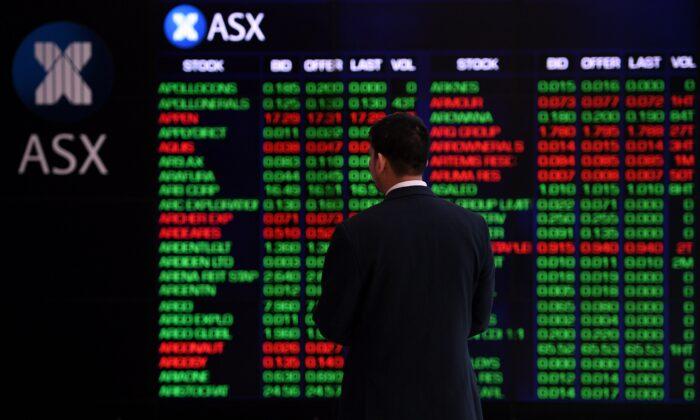Australian shares have finished higher for the fourth time this week after Donald Trump demanded cuts in interest rates and the price of oil.
The benchmark S&P/ASX200 index on Jan. 24 finished up 30.2 points, or 0.36 percent, to 8,408.9, while the broader All Ordinaries gained 31.3 points, or 0.36 percent, to 8,660.4.
Overnight Trump made a blustering online address to the World Economic Forum in Davos, calling on Saudi Arabia and the Opec oil producer cartel to cut the cost of oil to choke off revenue to Russia and stop its war against Ukraine.
“You gotta bring the oil price down, that will end that war,” he said.
“With oil prices going down, I'll demand that interest rates drop immediately, and likewise they should be dropping all over the world.”
Despite Trump’s pressure, the Fed is widely expected to leave interest rates unchanged at its first policy meeting next week.
Brent crude did fall 0.9 percent to a two-week low of US$78 (AU$123) a barrel following Trump’s comments, although the dip is likely to be transitory unless the Opec cartel follows through with an increase in production.
For the week the ASX200 rose 1.2 percent, its third-straight week of gains and its best weekly performance in 2025, a year in which it has so far gained 3.1 percent.
Moomoo analyst Jessica Amir said the benchmark index was in “hot pursuit” of its counterparts on Wall Street, where the S&P500 has gained 4.0 percent and the Dow Jones Industrial Average climbed 4.8 percent.
AMP chief economist Shane Oliver said the week had been a reminder of how Trump could whipsaw markets, such as with his back-and-forth over tariffs.
“This whipsawing is likely to continue,” Oliver said.
Eight of the ASX’s 11 sectors finished higher on Jan. 24, with energy and technology lower, and mining and telecommunications basically flat.
The consumer discretionary sector was the biggest gainer, rising 2.1 percent as Kmart owner Wesfarmers grew 3.2 percent to a more than one-month high of $74.66 (US$47.20).
But Kogan.com dropped 15.2 percent to a six-week low of $5.07 (US$3.2) after the online retailer reported “implementation and technology challenges” had adversely impacted the sales and profitability of its Mighty Ape business during the peak holiday trading period.
In the heavyweight mining sector, goldminers were generally lower even as the precious metal traded for US$2,775 (AU$4,390) an ounce—not far from the all-time high of US$2,790 (AU$4,414) in October.
Northern Star fell 0.6 percent, Evolution slipped 1.8 percent, and Westgold retreated 4.7 percent.
BHP rose 0.5 percent to $39.31 (US$24.80), Fortescue grew 1.0 percent to $18.81 (US$11.9), and Rio Tinto advanced 0.3 percent to $118.33 (US$77.80).
Three of the big four banks finished higher, with CBA gaining 0.5 percent to $158.65 (US$100.20), NAB advancing 0.6 percent to $39.40 (US$19.2) and Westpac rising 0.2 percent to $33.02 (US$20.87).
ANZ was the outlier, dipping 0.1 percent to $30.18 (US$20.97).
The energy sector fell 1.2 percent amid the drop in oil prices, with Woodside retreating 1.9 percent, Santos dipping 0.1 percent and Ampol declining 0.7 percent.
The Australian dollar moved back above 63 US cents for the first time since mid-December, when the U.S. Federal Reserve indicated it would likely cut interest rates in 2025 more slowly than previously forecast.
The Aussie was buying 63.25 US cents, from 62.71 US cents at Jan. 23’s ASX close.







